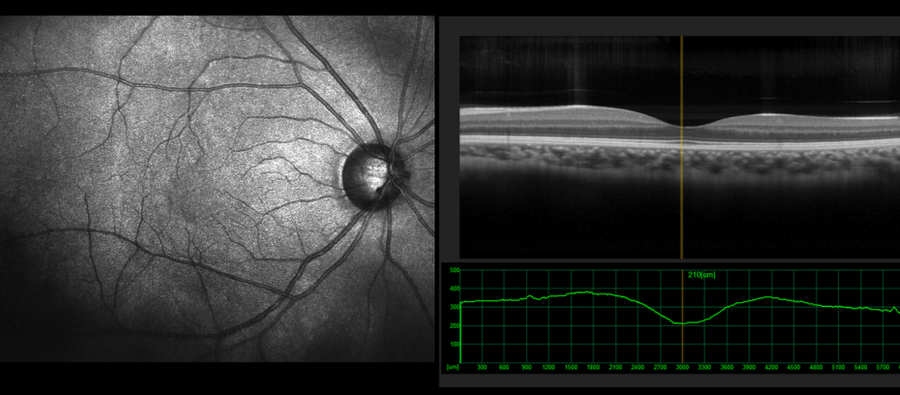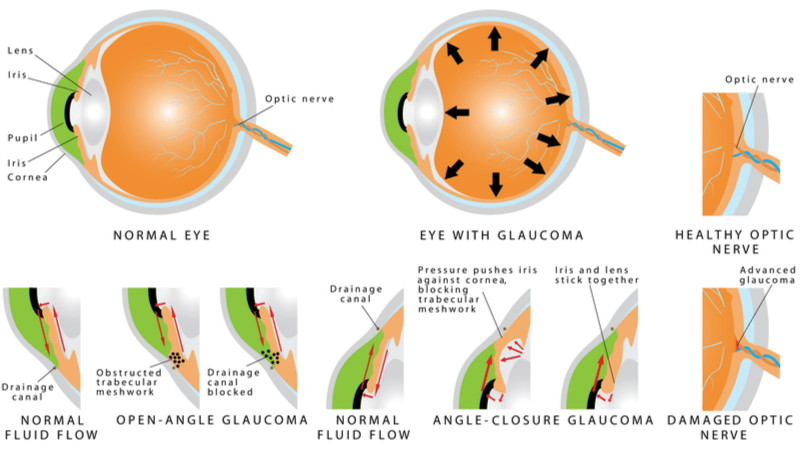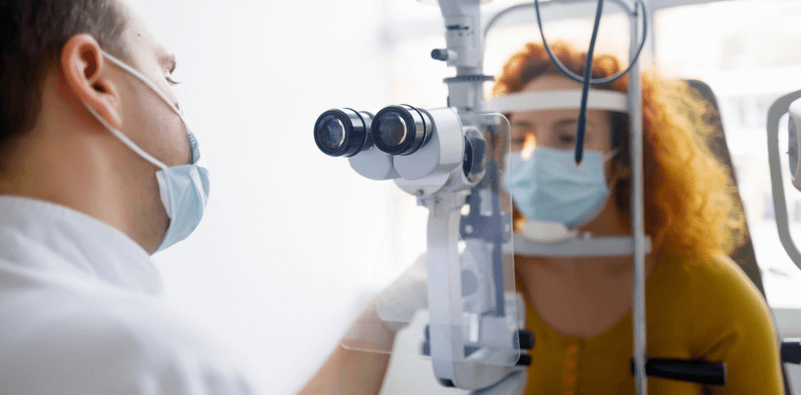At Ashdown and Collins, we have invested in state-of-the-art diagnostic equipment, including our top of the range Topcon Triton Optical Coherence Tomography (OCT) scan, which can be used to detect glaucoma.
What Is an OCT Eye Scan Of The Eye?
The OCT scan captures detailed 3D cross-sectional images of the layers of retinal tissue that make up the back of your eye. This helps our optometrists to detect early signs of sight threatening conditions and pinpoint them with the utmost accuracy in areas which aren’t visible with traditional retinal photography.

The OCT is quick, non-invasive, and only takes a matter of minutes to complete. The results are instantly available, meaning our optometrists will be able to analyse and explain them to you straight away. These images can be stored in your patient record, so we can compare results and monitor any changes the next time you have an OCT scan.
What Is Glaucoma?
Glaucoma is the name of a group of eye diseases that damage the optic nerve and is the leading cause of blindness for people over the age of 60.
The most common types of glaucoma are primary open angle glaucoma (POAG) and primary angle closure glaucoma (PACG).

POAG occurs when fluid can’t be adequately drained from the eye, resulting in increased eye pressure. This damages the optic nerve by constricting the amount of blood that can reach it.
People with POAG are usually asymptomatic for several years when it is still in its early stages, and by the time the condition has advanced, the damage is irreversible.
The signs of POAG – the most prevalent type – can only be picked up during an eye exam with advanced OCT scanning.
PACG occurs because of the fluid drainage angle in the eye being too narrow, which some people naturally have. This can cause a sudden and rapid increase in eye pressure, resulting in severe pain, red eyes, blurred vision, and nausea, which warrants immediate medical attention. Again, narrow drainage angles can be identified early on with our advanced eye exam.

This is why it’s important to attend eye exams regularly, especially if you have a family history of glaucoma, or you are over 40.
With symptoms only appearing once it is too late, having a routine eye exam and OCT scan could be the difference between identifying glaucoma early when it is still treatable, to you potentially losing your vision.
Our optometrists perform visual field and eye pressure tests to check for glaucoma as part of a routine eye exam, and the OCT scan can be added on to ensure every part of the eye has been covered for unparalleled accuracy.
How Does Glaucoma Affect Vision?
If left untreated, glaucoma will cause your vision to deteriorate, with your peripheral field of vision being affected first.
Although glaucoma can’t be cured, special eye drops and medication can be taken to lower eye pressure. Our optometrist will be able to refer you to an ophthalmologist at your local hospital eye department if further investigation or treatment is needed once they diagnose you.
Contact us
If you think you’re at risk of glaucoma, or have any of the symptoms mentioned, contact us for advice or book in an eye exam with an OCT scan at our opticians in the Kensal Rise and Queen’s Park area today, for your peace of mind.

